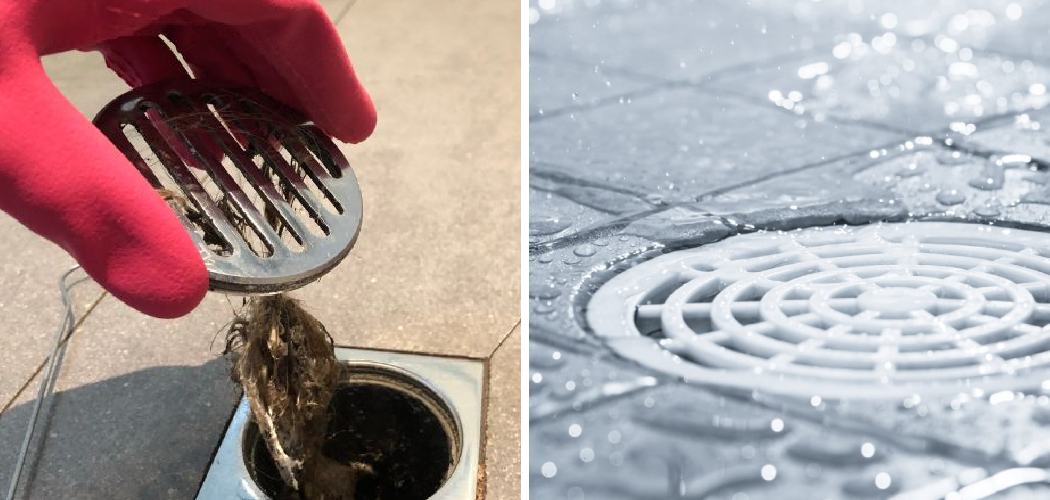In many households, a clogged floor drain can cause major headaches. Whether it’s in your basement, garage, or laundry room, standing water can quickly become a nuisance and lead to unpleasant odors and potential damage.
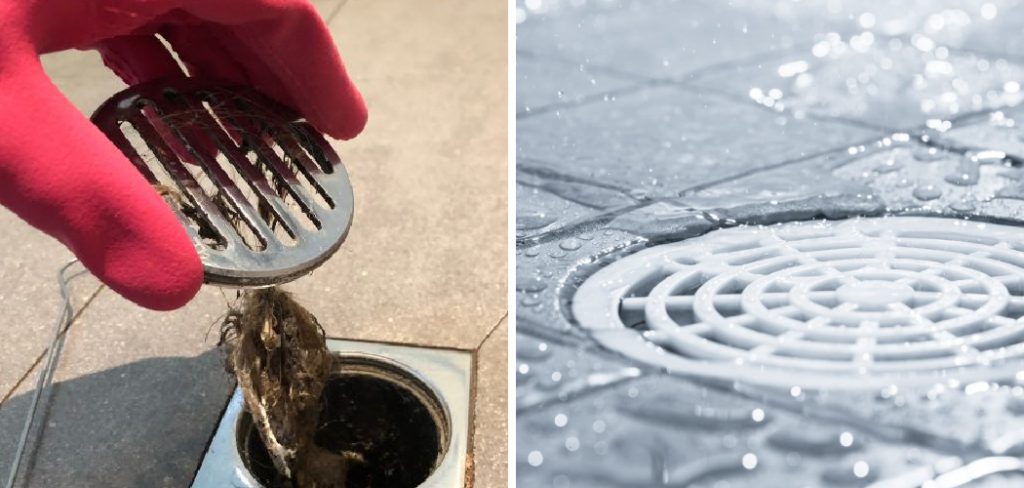
In this blog post on how to unclog a floor drain with standing water, we’ll show you how to tackle this issue head-on with easy-to-follow steps. You’ll learn why floor drains get clogged, the materials you’ll need, and a detailed guide to get that water moving again. Let’s get started!
What is a Clogged Floor Drain?
A clogged floor drain is a common household issue where water fails to drain away, causing it to pool on the surface. This can occur in various locations, such as basements, garages, and laundry rooms. Clogged drains can lead to unpleasant odors, potential water damage, and even health risks if not addressed promptly.
You may notice standing water, slow draining, or gurgling noises when using nearby fixtures. These are signs that your floor drain is clogged and in need of attention.
Why Do Floor Drains Get Clogged?
Understanding the reasons behind clogged floor drains can help you prevent them in the future. Here are some common causes:
Debris Accumulation
Over time, dirt, hair, soap scum, and other debris can accumulate in the drain, leading to blockages.
Grease Buildup
Especially in laundry rooms, grease from washing clothes and other items can solidify and clog the drain.
Tree Roots
In some cases, tree roots can invade underground pipes, causing blockages. This is more common in outdoor floor drains.
Foreign Objects
Small objects, such as toys or jewelry, can accidentally fall into the drain and cause a clog.

Needed Materials
Before you begin unclogging your floor drain, gather the following materials to make the process smoother:
Rubber Gloves:
Wearing rubber gloves will protect your hands from any bacteria or debris.
Plunger:
A plunger can be used to dislodge minor clogs in the drain.
Drain Snake/Auger:
For more stubborn clogs, a drain snake or auger will be needed to break up and remove the blockage.
Baking Soda & Vinegar:
This natural cleaning solution can help dissolve grease buildup and clear away odors.
Hot Water:
Boiling hot water can help flush out debris and unclog the drain.
Step-by-step Guidelines on How to Unclog a Floor Drain With Standing Water
Step 1: Put on Rubber Gloves to Protect Your Hands
Ensure you have all the necessary materials within reach. Put on your rubber gloves to protect your hands, and place a bucket nearby to collect any debris or water that may come out of the drain. It’s essential to wear gloves to avoid any potential contact with bacteria or harmful chemicals. You may also want to wear protective eyewear.
Step 2: Remove Visible Debris
Use a flashlight to inspect the drain opening for any visible debris. Remove any hair, dirt, or other particles using your hands or a small tool. This initial step can often help improve drainage. The removed debris can be disposed of in a trash bin or compost. It’s essential to avoid flushing it down the drain again.
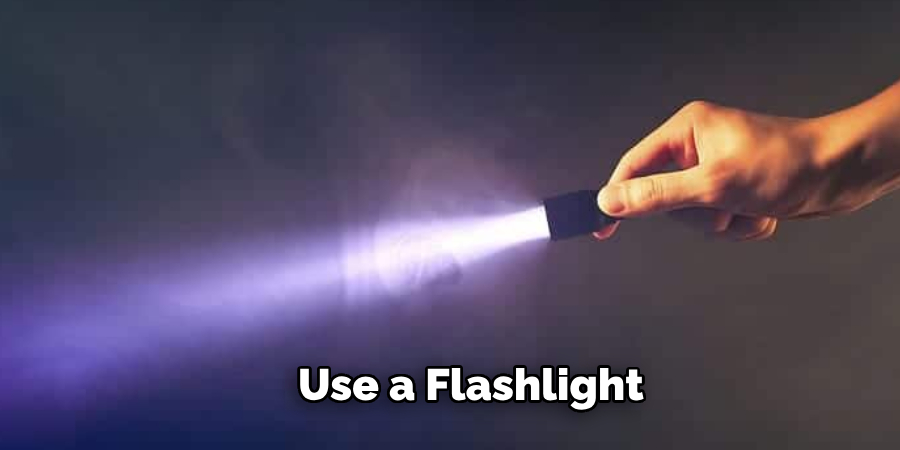
Step 3: Use a Plunger
Place the plunger over the drain opening and create a tight seal. Push and pull the plunger vigorously to create suction and dislodge the clog. Repeat this process several times. But be careful not to use too much force as it can damage the pipes or cause splashback. It’s best to start with this method before moving on to more invasive methods.
Step 4: Employ a Drain Snake
If the plunger doesn’t work, it’s time to use a drain snake or auger. Insert the snake into the drain and twist it to break up the clog. Continue feeding the snake until you encounter resistance, then retract it slowly to pull out the debris. You may need to repeat this process a few times until the drain is clear.
Step 5: Apply Baking Soda and Vinegar
Pour a cup of baking soda followed by a cup of vinegar down the drain. The chemical reaction will help break down the clog. Allow this mixture to sit for about 30 minutes. But be careful not to leave it for too long as the fizzing action can cause overflow. If you have a metal drain cover, be cautious as the vinegar can cause corrosion.
Step 6: Flush with Boiling Water
After baking, soda and vinegar have had time to work, so pour a kettle of boiling water down the drain. This will help clear away any remaining debris. Therese hot water can also help dissolve any remaining grease buildup. If the water doesn’t drain or drains slowly, you may need to repeat the previous steps.
Step 7: Use a Wet/Dry Vacuum
A wet/dry vacuum can be very effective for stubborn clogs. Set the vacuum to “wet,” place the hose over the drain opening, and turn it on. The vacuum will help suck out any remaining water and debris. You may need to repeat this process a few times if the clog is severe. It’s essential to clean out the vacuum after use.
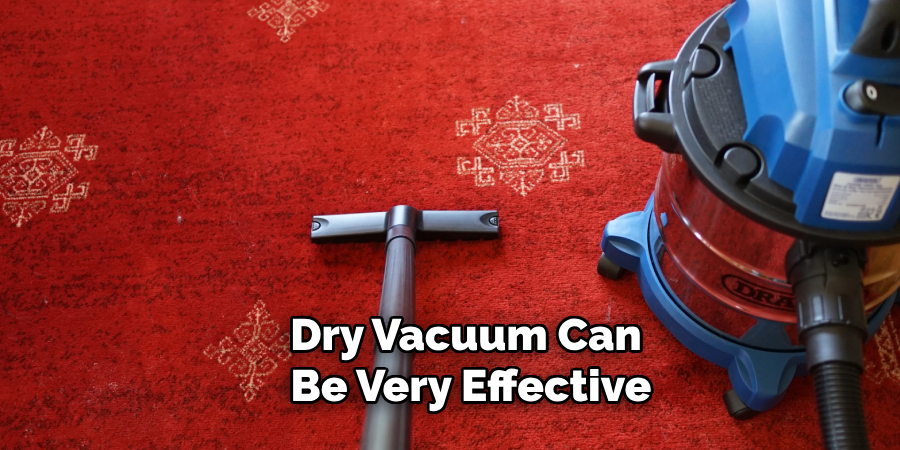
Step 8: Check the Trap
If the drain is still clogged, use a pipe wrench to remove the trap (the U-shaped pipe) beneath the drain. Clean out any debris inside and reattach it securely. But be careful not to overtighten the connections. There may also be a cleanout plug that can be removed to access the drain directly. If the trap is clear, the clog may be further down the pipe and may require professional assistance.
Step 9: Inspect for Tree Roots
In rare cases, tree roots can cause blockages in underground pipes. Use a flashlight to inspect the drain for any signs of roots. If you suspect this is the issue, consult a professional plumber. It’s best to address this problem promptly to avoid further damage. You may also need to consider installing a backflow preventer to prevent future root invasions.
Step 10: Test the Drain
Finally, pour a bucket of water down the drain to ensure it flows freely. If the water drains quickly, congratulations—you’ve successfully unclogged your floor drain! You may want to repeat this process once every few months as part of regular maintenance. It’s also a good idea to avoid pouring any grease or foreign objects down the drain in the future.
Following these steps on how to unclog a floor drain with standing water can help you unclog your floor drain with standing water and prevent future clogs. Regular maintenance, such as using a drain cover and avoiding putting grease down the drain, can also help keep your floor drains in good working condition.
Remember to always wear rubber gloves and use caution when dealing with potentially hazardous materials. With these tips, you’ll be able to quickly solve any clogged floor drain issue that comes your way. Happy draining!
Additional Tips for Preventing Future Clogs
Regular Maintenance
Periodically clean your drains to prevent debris buildup. Use a mixture of baking soda and vinegar followed by boiling water every few months.
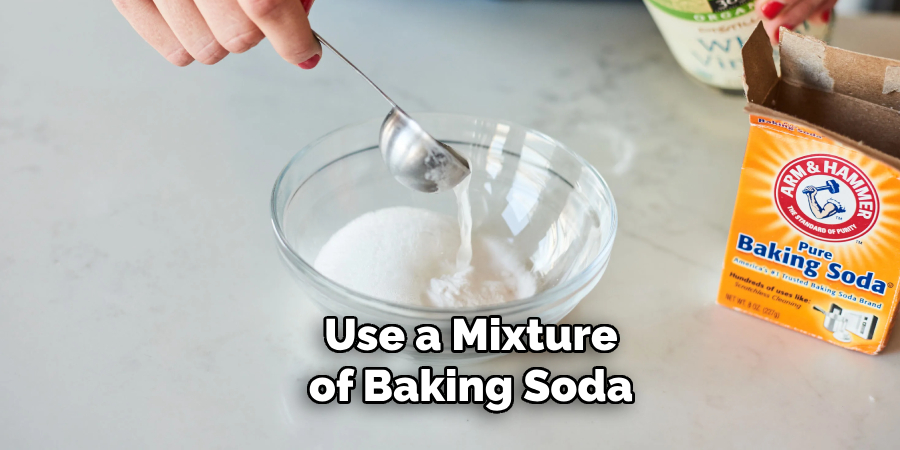
Install Drain Covers
Consider installing drain covers or screens to catch hair, dirt, and other debris before they enter the drain.
Avoid Pouring Grease
Never pour grease or oil down the drain, as it can solidify and cause clogs. Dispose of grease in a separate container.
Trim Nearby Trees
If tree roots are a recurring issue, consider trimming or removing trees near your drainage system.
Professional Maintenance
If you notice recurring clogs or have a particularly stubborn clog, consult a professional plumber for maintenance or repairs.
Taking these preventive measures can help keep your floor drains functioning properly and avoid the hassle of dealing with standing water and clogs. By understanding the common causes of clogged floor drains and having the necessary materials and knowledge, you’ll be able to effectively handle any future drainage issues that may arise.
Frequently Asked Questions
Q1: What Should I Do if My Floor Drain is Still Clogged After Following These Steps?
If your floor drain remains clogged after attempting these steps, it may be time to call a professional plumber. They have specialized tools and expertise to handle more severe blockages.
Q2: Can I Use Chemical Drain Cleaners to Unclog My Floor Drain?
While chemical drain cleaners can be effective, they can also damage your pipes and harm the environment. It’s best to use natural methods like baking soda and vinegar or consult a professional.
Q3: How Often Should I Clean My Floor Drains to Prevent Clogs?
Regular maintenance is key to preventing clogs. Aim to clean your floor drains every few months using a mixture of baking soda and vinegar followed by boiling water. However, if you notice slow drainage or any signs of clogs, it’s best to clean them immediately.
Q4: Can I Use the Same Methods to Unclog Sinks and Showers?
Yes, these methods can also be used to unclog other types of drains in your home, such as those in sinks and showers. It’s important to note that different types of drains may require different tools or techniques, so it’s best to consult a professional if you’re unsure. Additionally, regular maintenance for all drain types is important to prevent clogs and keep your plumbing system running smoothly.
Conclusion
Clogged floor drains can be a hassle, but with the right tools and techniques, you can tackle this common household issue effectively.
Remember to gather your materials, follow the step-by-step guide, and take preventive measures to keep your drains clear in the future. If you’re facing persistent clogs, don’t hesitate to seek professional help.
By following these tips on how to unclog a floor drain with standing water, you’ll ensure your home’s drainage system runs smoothly, keeping your living spaces clean and dry. Ready to get started? Gather your materials and say goodbye to standing water today!

